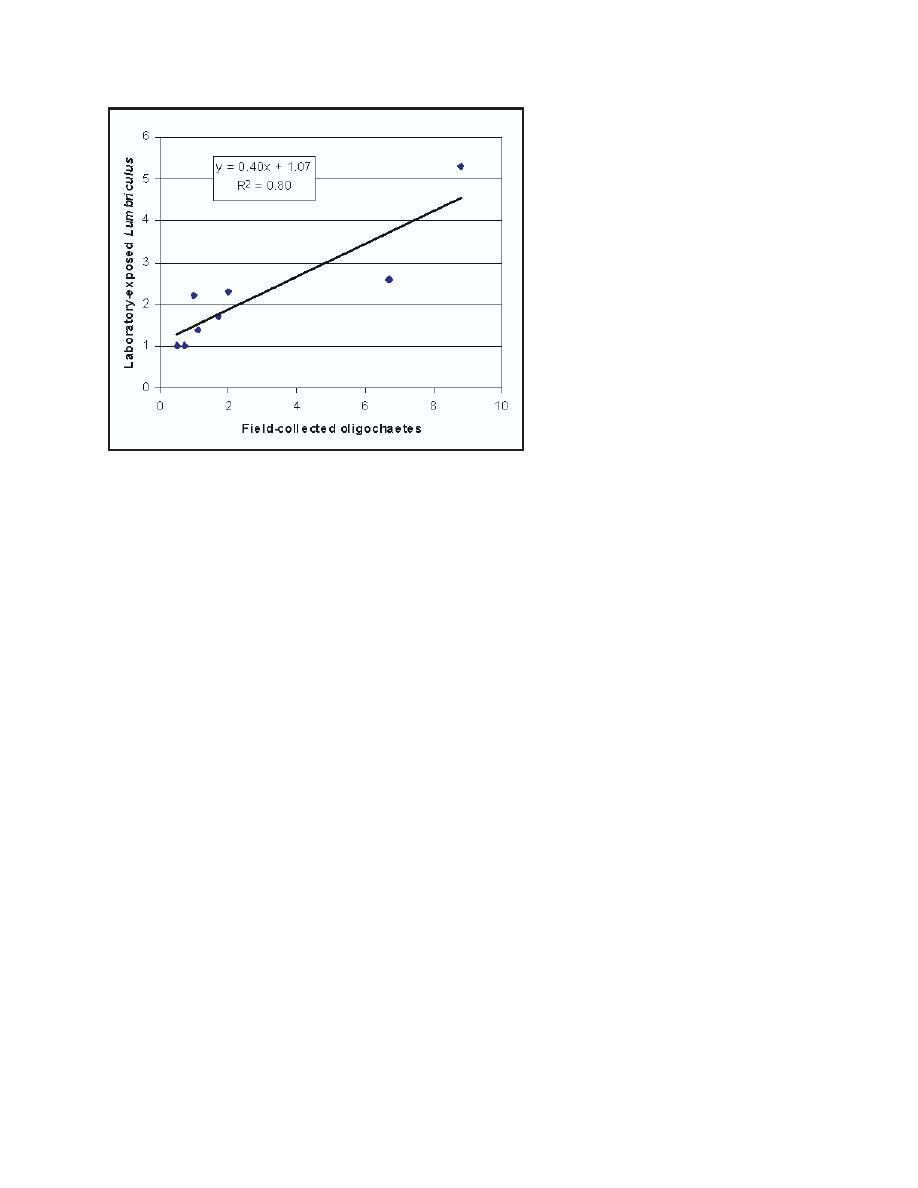 |
||
|
|
||
|
Page Title:
Figure 8. Biota to sediment accumulation factors (BSAFs) for PAHs in laboratory-exposed L. variegatus compared with BSAFs for... |
||
| |||||||||||||||
|
|
 ERDC TN-DOER-C23
September 2001
In the FVP, sediment was placed in the
field in a way that reflected how the
material would be handled in a
dredged material assessment. It is un-
likely in the current regulatory climate
that a similar study could be conducted
today (i.e., contaminated material
placed in the environment in an un-
confined manner without subsequent
capping). Consequently, future ex-
perimental/manipulative studies will
most likely rely on the use of sediment
placed in small, recoverable contain-
ers in the field. The use of containers
can lead to effects that may not neces-
sarily reflect effects in unenclosed
systems. It is possible that using con-
Figure 8. Biota to sediment accumulation factors (BSAFs)
tainers to evaluate contaminated sedi-
for PAHs in laboratory-exposed L. variegatus
ment effects on benthic recolonization
compared with BSAFs for field-collected
may lead to effects on recruitment that
oligochaetes (adapted from Brunson et al. 1998)
do not necessarily reflect recruitment
patterns of the surrounding community. Dudzik et al. (1979) reported heightened biological and
chemical activity along the edges and bottoms of experimental microcosms. Stephenson et al. (1984)
showed differences in the distribution of planktonic organisms related to the size of enclosure.
Flemmer et al. (1993) demonstrated effects of container size on benthic recolonization in laboratory
microcosms. These "edge effects" where spurious recruitment patterns are observed at the edge of
the container and issues associated with scaling (i.e., container size) must be considered and
accounted for in these types of studies.
Choosing between an experimental/manipulative and a correlative/observational approach or
development of new approaches for future validation efforts must be driven by the questions being
asked. For example, if one is interested in evaluating the predictive ability of a test for the assessment
of in-place contaminants, a correlative approach might be more appropriate as this more closely
approximates the type of assessment one is trying to represent. However, if one is trying to validate
a test for assessing potential effects associated with a disposal activity where material is physically
displaced to a new location (e.g., dredging and disposal), then an experimental approach might more
closely approximate the scenario one is trying to evaluate.
In both correlative/observational and experimental/manipulative approaches it is important to
measure a variety of biological (abundance, diversity, size/age class) and physicochemical parame-
ters (sediment chemistry, grain size, total organic carbon, redox, etc.) to capture important changes
in biological response and potential factors affecting exposure. Consideration must be given to
understanding the dynamics of the community (e.g., patterns of recruitment) in the area where the
study will be conducted. This will help to ensure that the field assessment is conducted in a way
that captures changes in the benthic community and enhances the ability of the study to discriminate
meaningful differences in community level responses. Because changes in benthic community
14
|
|
Privacy Statement - Press Release - Copyright Information. - Contact Us - Support Integrated Publishing |